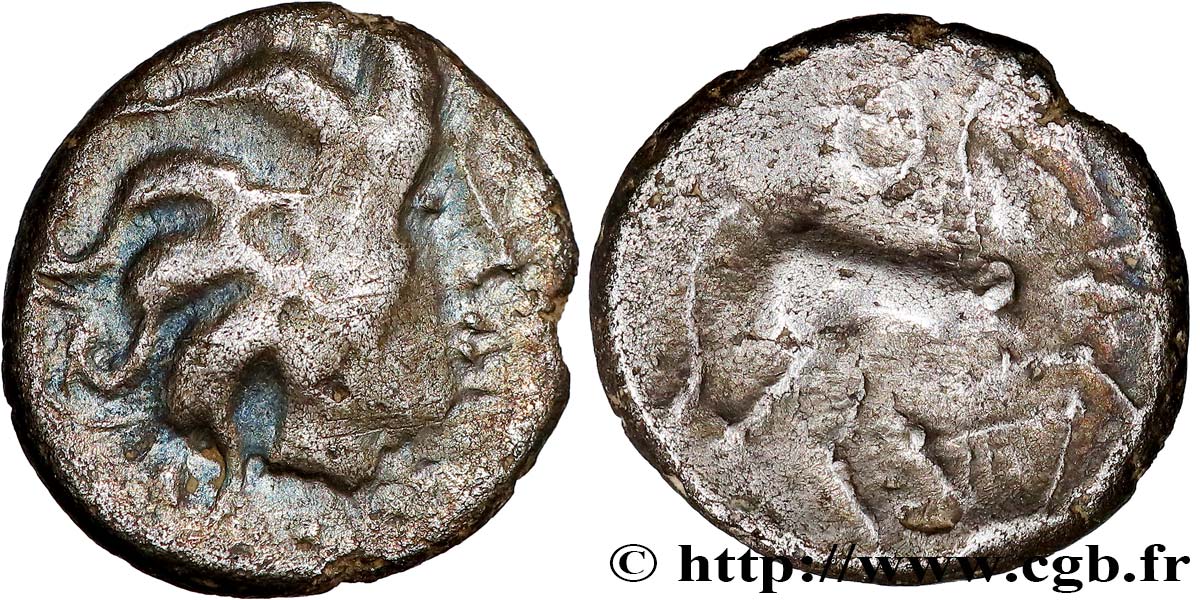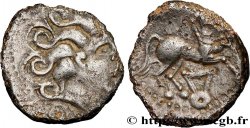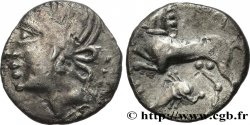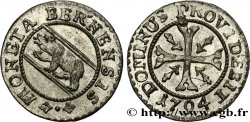Obverse
Obverse legend : ANÉPIGRAPHE.
Obverse description : Tête à droite, les cheveux en mèches bouclées et enroulées à leur extrémité.
Reverse
Reverse legend : ANÉPIGRAPHE.
Reverse description : Cheval galopant à droite ; lyre au-dessous et un annelet (?) au-dessus.
Historical background
EDUENS, ÆDUI (BIBRACTE, Area of the Mont-Beuvray)
(2nd - 1st century BC)
The Aedui (Aedui), which could be translated as the "Ardent", were certainly, after the Arverni, the most important people of Gaul. Their territory extended between Seine, Loire and Saône on the current departments of Saône-et-Loire, Nièvre, part of Côte-d'Or and Allier. They occupied a strategic position on the dividing line between the Mediterranean, the Atlantic and the English Channel.. The Aedui, perpetual rivals of the Arverni, had replaced them after the end of the Arverni Empire and the defeat of 121 BC.. -VS. Loyal allies of the Romans from the start of the Second Punic War, when Hannibal passed through Gaul in 218 BC. -VS. , it is thanks to their alliance that Domitius Ahenobarbus could have justified his intervention against the Allobroges in 121 BC. -VS. They were no strangers to the Roman intervention in Gaul and the outbreak of the War. In 58 BC. -VS. , the Aedui appealed to Caesar to protect them against the Suevian invasion of Ariovistus which threatened their territory and then again to contain the Helvetian thrust. If the vergobret Liscus, principal magistrate of the Aedui, remained faithful to the Roman alliance, part of the Aedui oligarchy joined the Gallic camp with Dumnorix and Divitiacos. The Aedui remained faithful to the Roman alliance during the War, although Caesar estimated the Aedui who participated in the Gallic coalition at thirty-five thousand men.. Caesar did not hold it against them and they received citizenship directly because they were considered "consanguineous brothers of the Romans". Their oppidum was Bibracte (Mont-Beuvray), but they abandoned it in 15 BC.. -VS. to go and found Augustodunum (Autun). Caesar (BG. I, 10, 33; VII, 32, 33); Strabo (G. IV, 3). Kruta: 21, 46, 69-70, 187, 251, 348-349, 351, 359, 362, 364-365.










 Report a mistake
Report a mistake Print the page
Print the page Share my selection
Share my selection Ask a question
Ask a question Consign / sell
Consign / sell
 Full data
Full data














